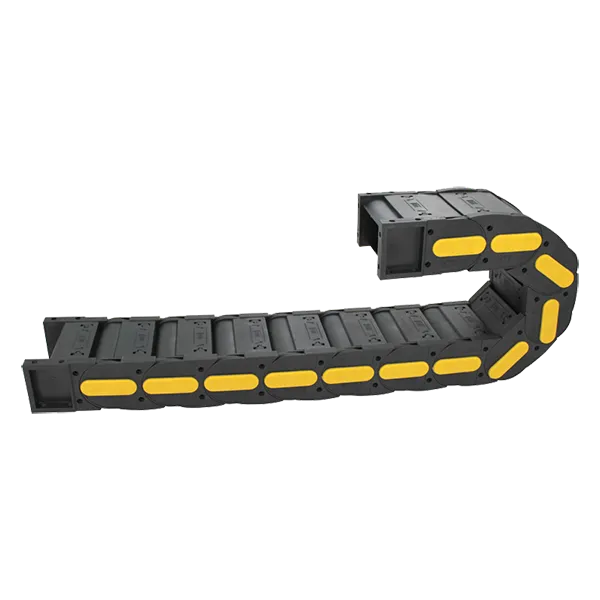plastic cable carrier
Understanding Plastic Cable Carriers A Comprehensive Overview
In today's rapidly evolving technological landscape, the efficient management of cables is essential for maintaining organization and functionality in various industrial applications. One effective solution for this challenge is the use of plastic cable carriers, also known as drag chains or energy chains. These innovative components provide a systematic approach to cable management, enhancing operational efficiency and ensuring the protection and longevity of electrical and data cabling.
What are Plastic Cable Carriers?
Plastic cable carriers are designed to support and guide moving cables, hoses, and tubing in automated machinery and equipment. They consist of a series of interconnected links, forming a chain-like structure, which allows for flexibility while preventing tangling or abrasion of the cables. Made from high-quality plastic materials, these carriers are lightweight, durable, and resistant to a variety of environmental factors, including chemicals and temperature fluctuations.
The design of plastic cable carriers is engineered to accommodate a wide range of applications, from simple setups in small machines to complex configurations in large-scale manufacturing environments. Typical uses include CNC machines, robotic arms, conveyor systems, and automated assembly lines.
Key Benefits of Plastic Cable Carriers
1. Organization and Protection One of the primary advantages of using plastic cable carriers is their ability to keep cables organized. By housing cables in a designated carrier, businesses can prevent tangling and excessive wear, significantly reducing maintenance costs and downtime. Moreover, the rigid structure of the carrier protects cables from abrasion and environmental elements.
2. Flexibility and Mobility Plastic cable carriers are designed to provide smooth movement along defined paths, allowing for dynamic applications where equipment and machinery experience continuous motion. This flexibility is crucial in industrial settings, where machinery often operates under various conditions and needs to adjust according to process changes.
plastic cable carrier

3. Easy Installation and Configuration Compared to other types of cable management solutions, plastic cable carriers are relatively easy to install and configure. Many manufacturers offer customizable options, allowing users to tailor the carrier's dimensions and design to fit specific requirements. This adaptability is valuable as it minimizes the need for extensive modifications to existing infrastructures.
4. Cost-Effectiveness The longevity and durability of plastic cable carriers help in reducing overall operational costs. By minimizing cable replacement due to abrasion or damage, companies can achieve considerable savings over time. Furthermore, the initial investment in high-quality plastic cable carriers often pays off in terms of lower maintenance and repair expenditures.
5. Environmental Resistance Many plastic cable carriers are engineered to withstand harsh conditions, including extreme temperatures, exposure to chemicals, and high levels of moisture. This resilience makes them suitable for a variety of industries, such as automotive, aerospace, and food processing, where they can maintain performance in challenging environments.
Applications Across Industries
The versatility of plastic cable carriers makes them suitable for numerous applications across different sectors. In manufacturing, they are commonly utilized in automated production lines, where they help manage the extensive wiring associated with robotics and machinery. In the entertainment industry, cable carriers are essential for rigging systems where lighting and sound cables need to be organized and safely managed.
Telecommunications are another significant area where plastic cable carriers come into play, ensuring that networking cables are protected and without interference. They are also increasingly found in renewable energy applications, particularly in wind turbines and solar installations, where effective cable management is critical for reliable energy distribution.
Conclusion
In summary, plastic cable carriers represent an essential component in the field of cable management, providing numerous advantages for modern industrial applications. Their ability to organize, protect, and maintain the mobility of cables enhances overall efficiency, reduces operational costs, and supports diverse applications across various sectors. As technology continues to advance, the role of plastic cable carriers will only become more significant in ensuring that machinery operates smoothly and effectively in an increasingly automated world.








